Some of the most popular pieces of antique porcelain and bone china come from well-loved tea sets. Whether teacups and teapots are family heirlooms, decorative objects or still serve a practical purpose, it is worth looking into their history to establish possible value and any need for professional preservation.
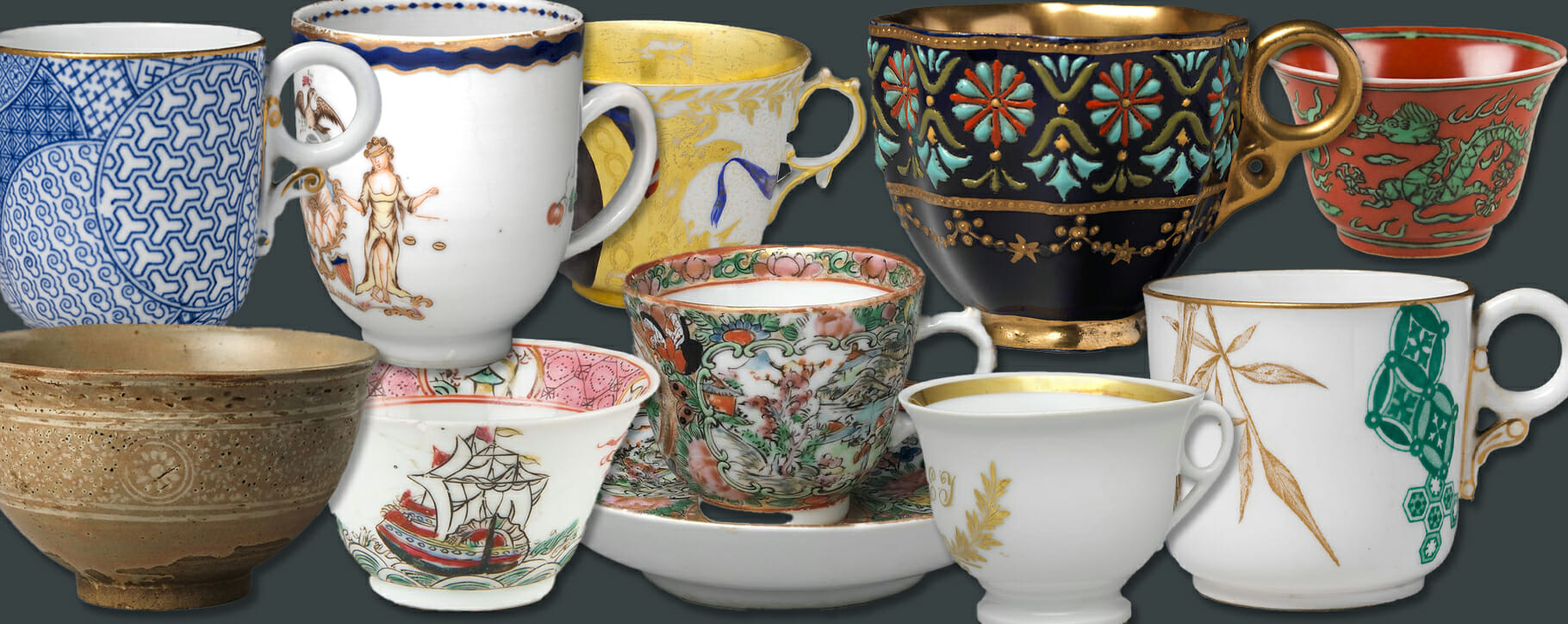
From historic Yixing teapots to the products of European porcelain factories, you can often tell a lot about a teacup or pot by the precise shape of its handle or overall appearance. This article will guide you through some of the most common shapes and sizes of antique tea sets and the famous manufacturers this may imply.
 Above: various teacups from Worcester, Coalport and Meissen
Above: various teacups from Worcester, Coalport and Meissen
When antique ceramics have high value they may require professional conservation treatments to ensure their safety going forwards. This includes the removal of contamination build-up, such as the tannins from tea steeping, and the stabilisation of any deteriorating areas. We will explore the options available from our ceramics conservator at the end of this article.
Different cup shapes
The first aspect to look at when analysing the style of a cup is the possible era or use. This can be established by looking at the overall shape. Chinese or Japanese tea cups do not often have handles and may be referred to as a tea bowl rather than a tea cup, depending on size.
It was in the 18th century that European manufacturers began the mass production of teacups as we know them today in western culture. These may appear as a more uniform cup with handle, although their decoration may vary. See our article on maker’s marks for more information on the markings that you may come across on the bottom of cups, teapots and saucers. This will be the clearest indicator of their origin factory.

Above are examples of a Chinese tea cup, an 18th century tea cup and a 19th century teacup.Victorian tea cups may either show signs of being thoroughly more uniform and mass produced as a product of the industrial era, whilst more luxurious examples may have intricate handles and waved edges.

Coffee cups are generally taller than teacups, above are contrasting shapes that may indicate that you are looking at a coffee cup rather than a teacup. On the right is a typical antique coffee cup and on the left is what is known as a coffee can.
Teacup handle shapes
If you are unable to distinguish a maker’s mark, often due to the ink bleeding under the glaze or deterioration, you can look at the typical handles from each manufacturer. Listed below are common examples that you may come across, this should be able to assist in further searches on auction websites for an idea of value.

Above left: Crown Derby loop handle
Above centre left: an early Crown Derby square stepped handle
Above centre: Crown Derby wishbone handle
Above centre right: Coalport handle style dated to 1805
Above right: Spode handle with a kick base

Above left: Miles Mason handle
Above centre left: Minton handle (rare)
Above centre: Minton ring handle
Above centre right: New Hall ring handle
Above right: New Hall ring handle

Above left: Spode handle dated 1805
Above centre: Pinxton handle
Above right: Bristol handle

Above left: Ridgway handle
Above centre left: Daniel handle
Above centre right: Rockingham handle
Above right: Davenport handle

Above left: Spode handle, 1805
Above centre: Spode handle, 1815
Above right: Longton Hall handle
Teapot shapes
Like tea cups, teapots may also have shapes that indicate a specific manufacturer. Here are some of the most typical examples.

Above left: a classic Chinese teapot handle
Above centre: Crabstock handle
Above right: Liverpool biting snake handle
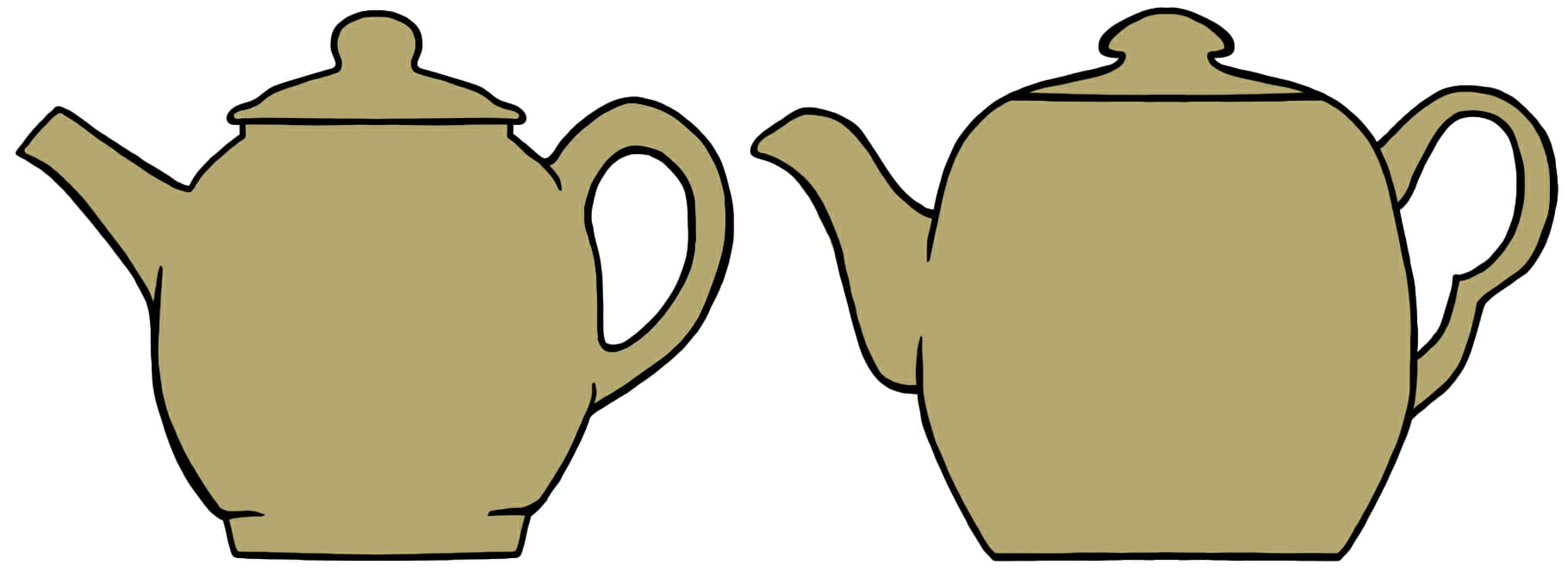
Above left: Globe teapot, 18th century
Above right: Caughley teapot, late 18th century
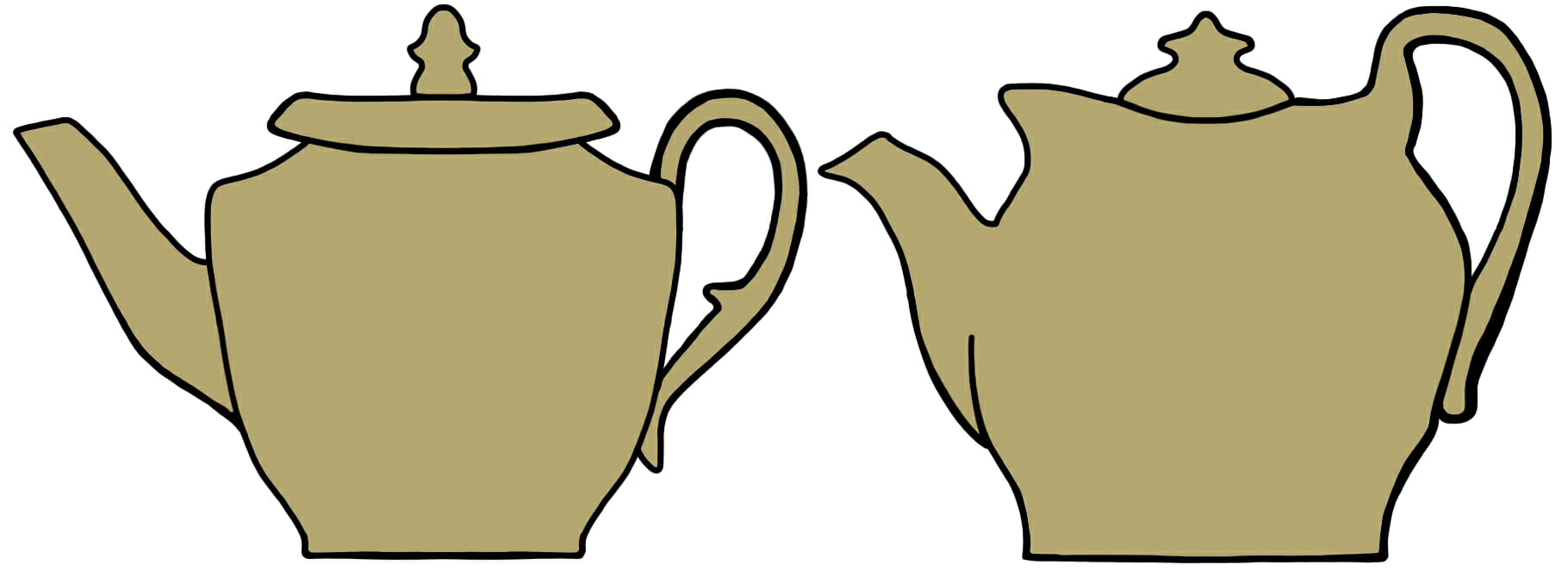
Above left: Pinxton teapot, late 18th century
Above right: New Hall teapot, early 19th century
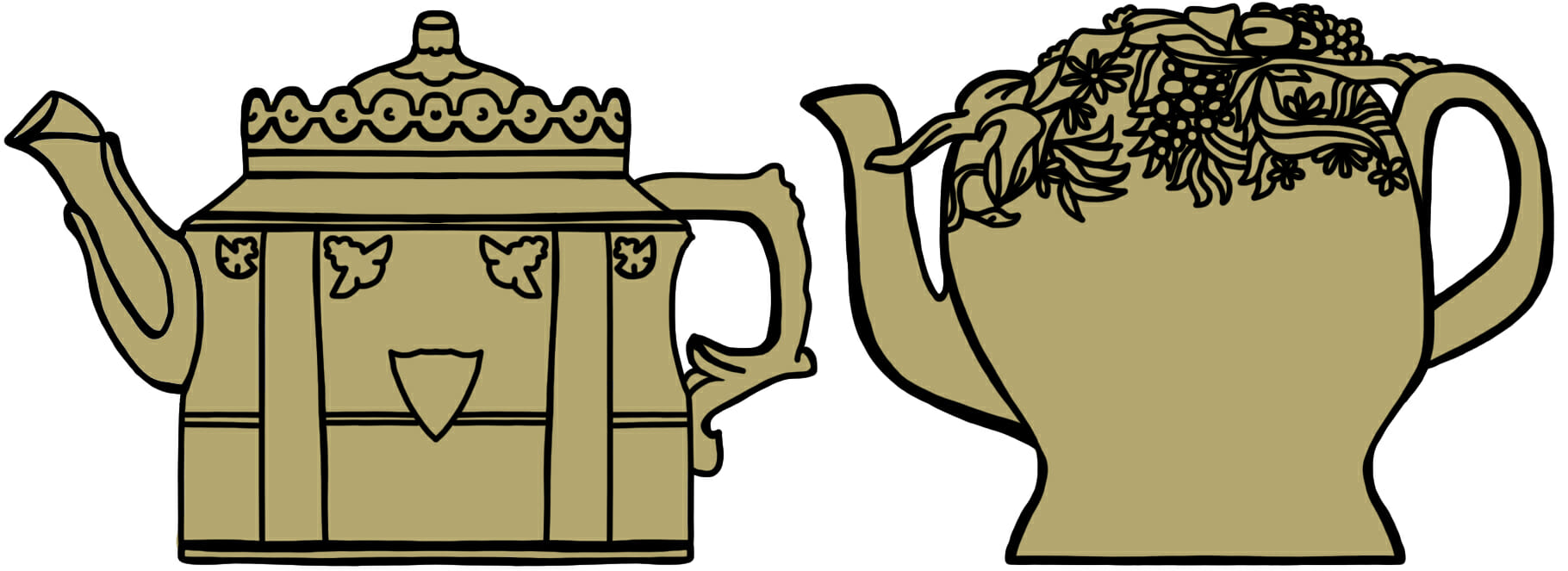
Above left: Castleford teapot, 1793-1820
Above right: Rockingham Cadogan teapot, 1850
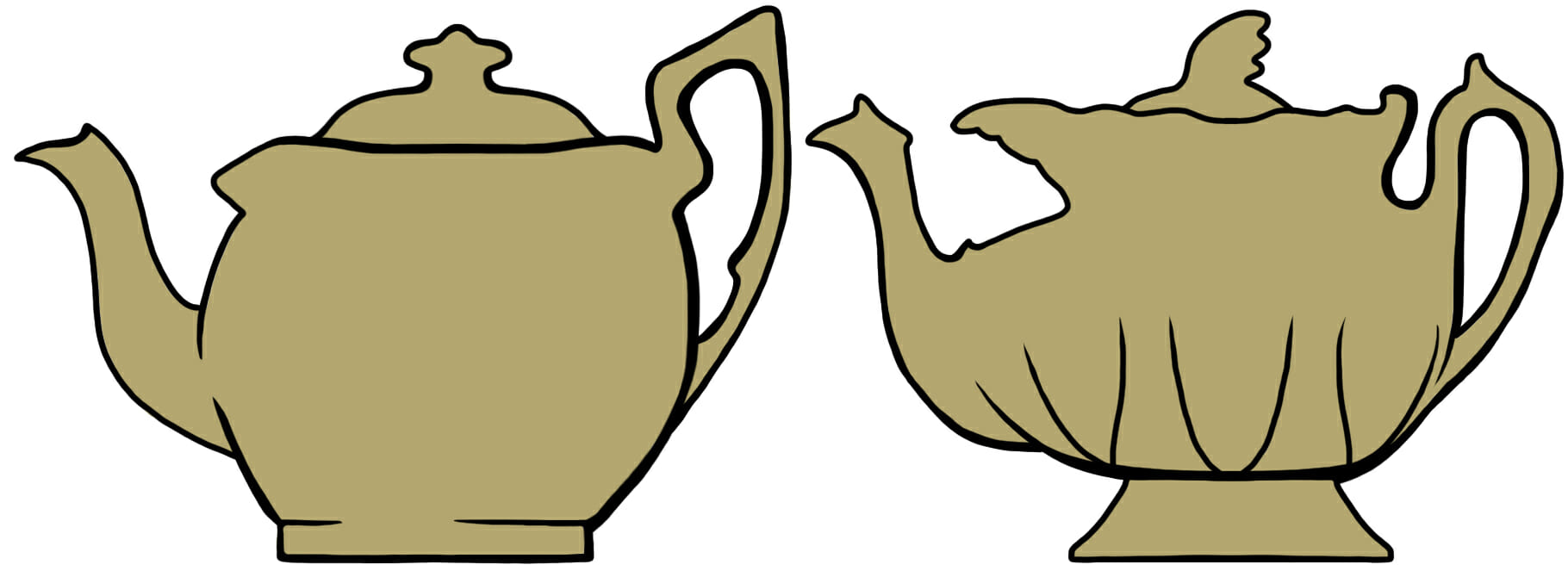
Above left: New Hall teapot, early 19th century
Above right: a typical Victorian teapot style
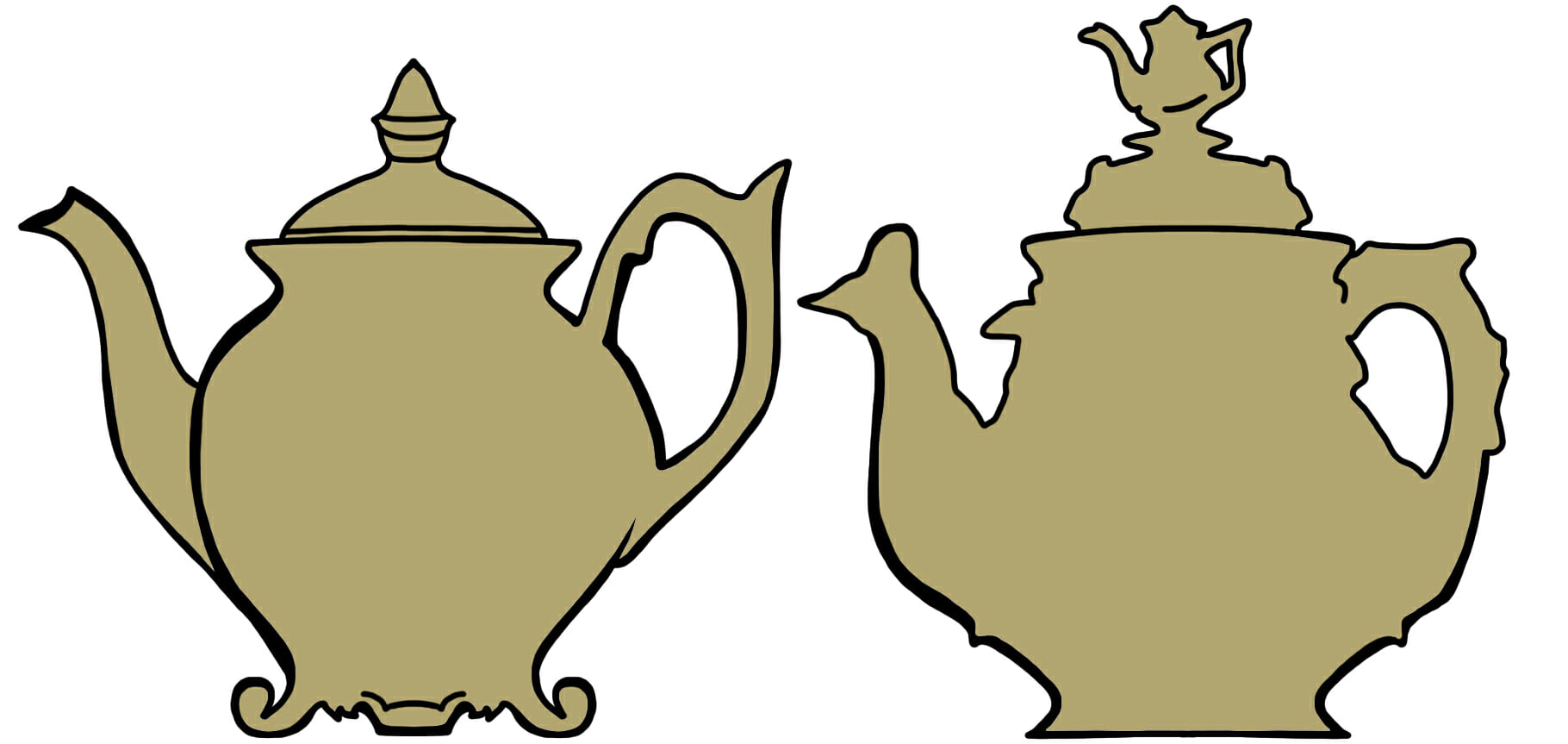
Above left: Coalport teapot, 1825
Above right: Measham Bargeware teapot, late 19th century
Preserving valuable ceramics
If you have discovered that your tea cup or teapot is high value and would like to take measures to further protect it, our ceramics conservator is able to provide a range of treatments. If a teapot or cup has been in use or has a build-up of historic tannins from tea steeping, this can be professionally cleared away to ensure all surfaces are clean and stable.
 Above: a coffee pot before and after restoration by our conservator
Above: a coffee pot before and after restoration by our conservator
If a tea cup or teapot has become damaged, either through age or an accident, our ceramics conservator can expertly restore lost or broken areas. A high level of skill is involved in the restoration of badly damaged pieces, including the full recreation of lost areas and re-touching of decoration and finish, all based on historic knowledge and research for an accurate result.
 Above: a teacup that had previously been repaired at home with glue, this causes yellowing and acidic deterioration – our conservator removed this adhesive and restored the breakage with a conservation-approved solution
Above: a teacup that had previously been repaired at home with glue, this causes yellowing and acidic deterioration – our conservator removed this adhesive and restored the breakage with a conservation-approved solution
To protect a restored piece going forwards, we recommend that they are no longer used for any practical purpose and are kept for display only. Valuable ceramics should be kept behind glass and upon a stable surface to prevent accidents and the build-up of atmospheric dust and airborne contamination.
 Above: a Clarice Cliff cup before and after restoration by our conservator
Above: a Clarice Cliff cup before and after restoration by our conservator
How does restoration affect value?
Whilst some may argue that restored ceramics could fetch lower value at auction, it is certainly the case that they will have a more attractive prospect with restored areas when contrasted with presenting with lost pieces, breakages or major visual disturbances.
How can we help?
If you have a tea cup, teapot or another ceramic piece that you have concerns about, please get in touch with our team for swift and helpful advice.
To make contact please email us via [email protected] or call 0207 112 7576

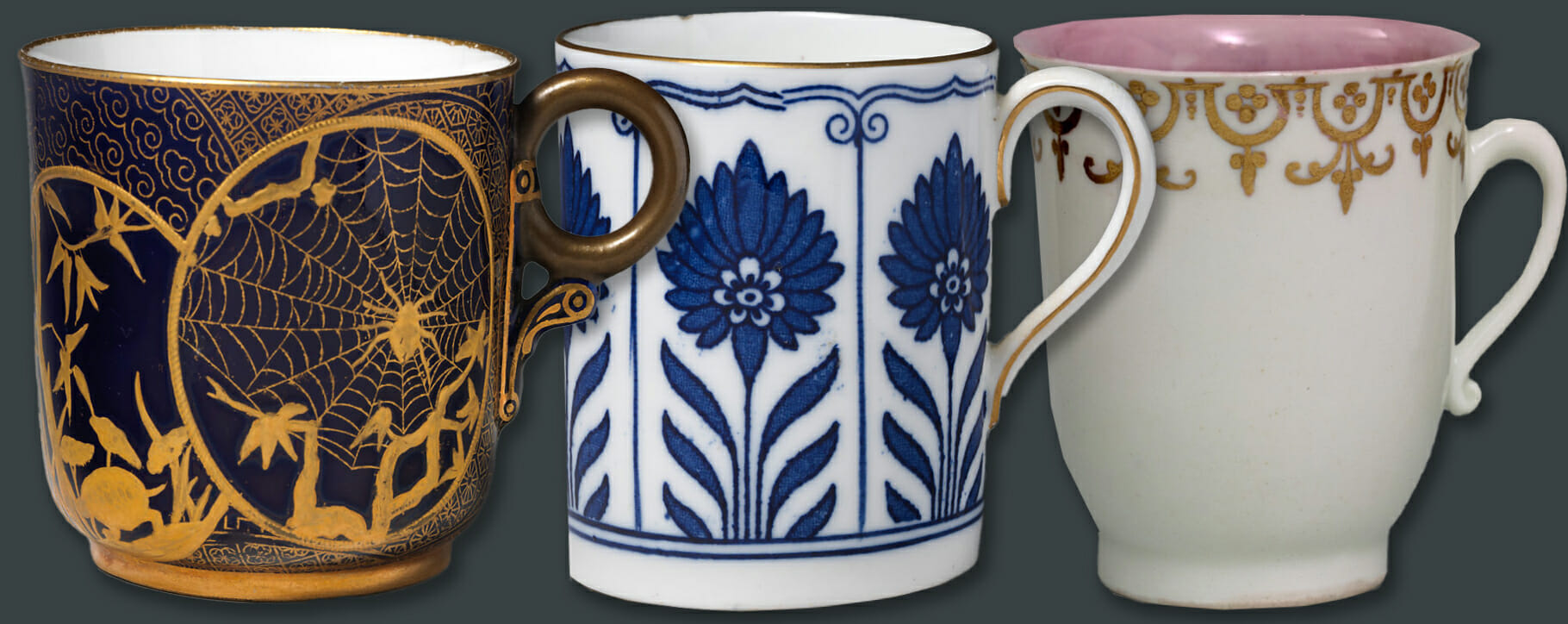 Above: various teacups from Worcester, Coalport and Meissen
Above: various teacups from Worcester, Coalport and Meissen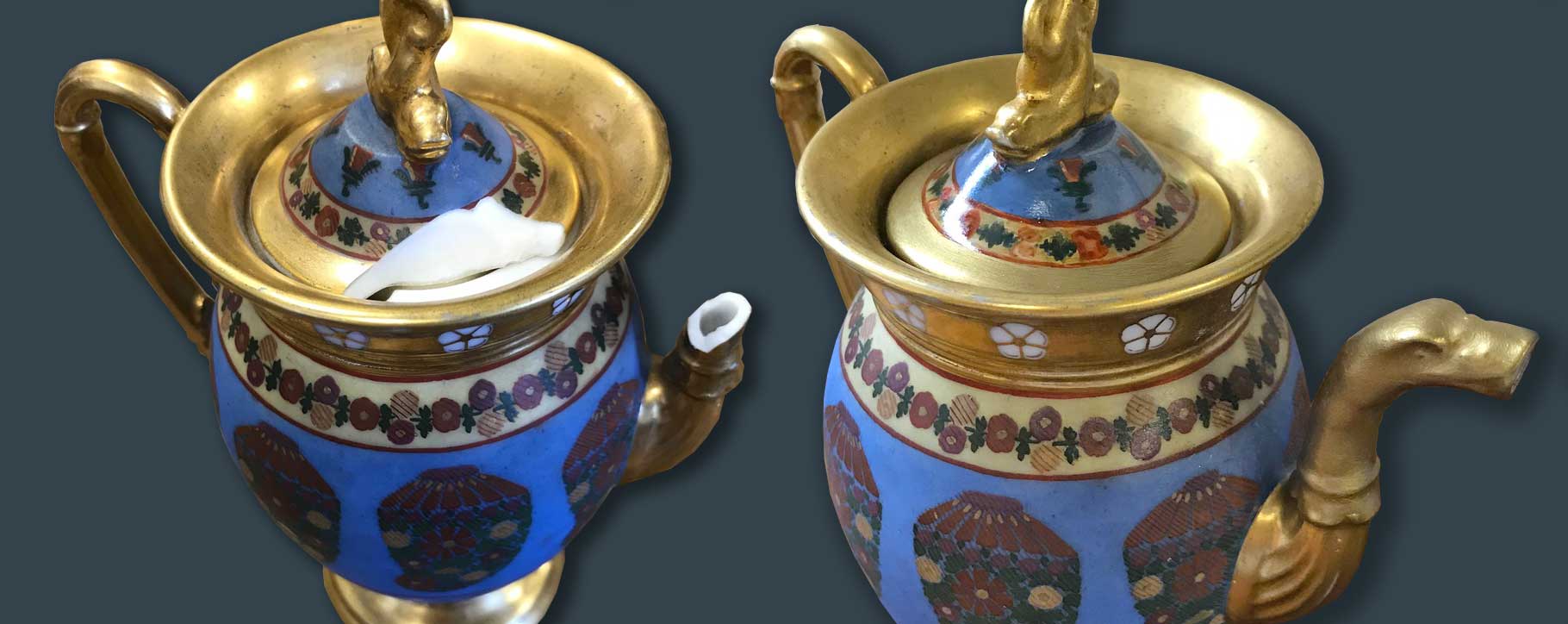 Above: a coffee pot before and after restoration by our conservator
Above: a coffee pot before and after restoration by our conservator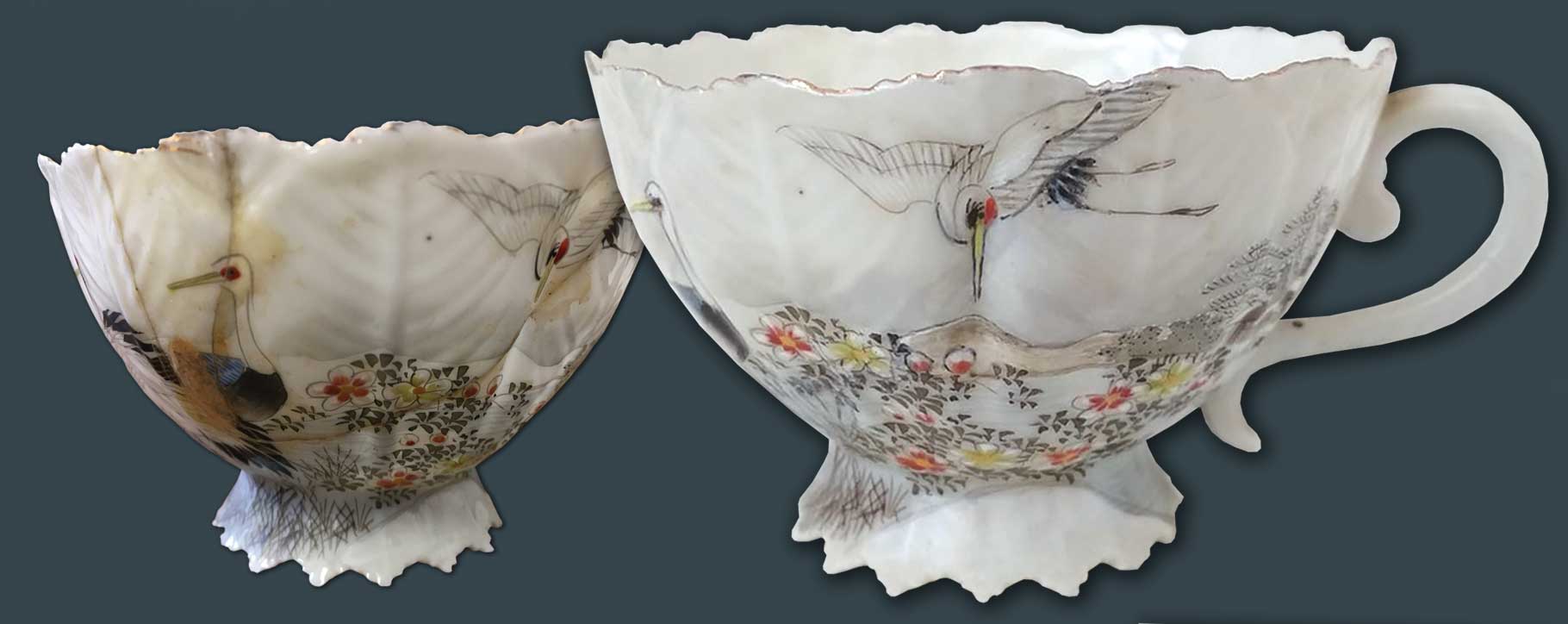 Above: a teacup that had previously been repaired at home with glue, this causes yellowing and acidic deterioration – our conservator removed this adhesive and restored the breakage with a conservation-approved solution
Above: a teacup that had previously been repaired at home with glue, this causes yellowing and acidic deterioration – our conservator removed this adhesive and restored the breakage with a conservation-approved solution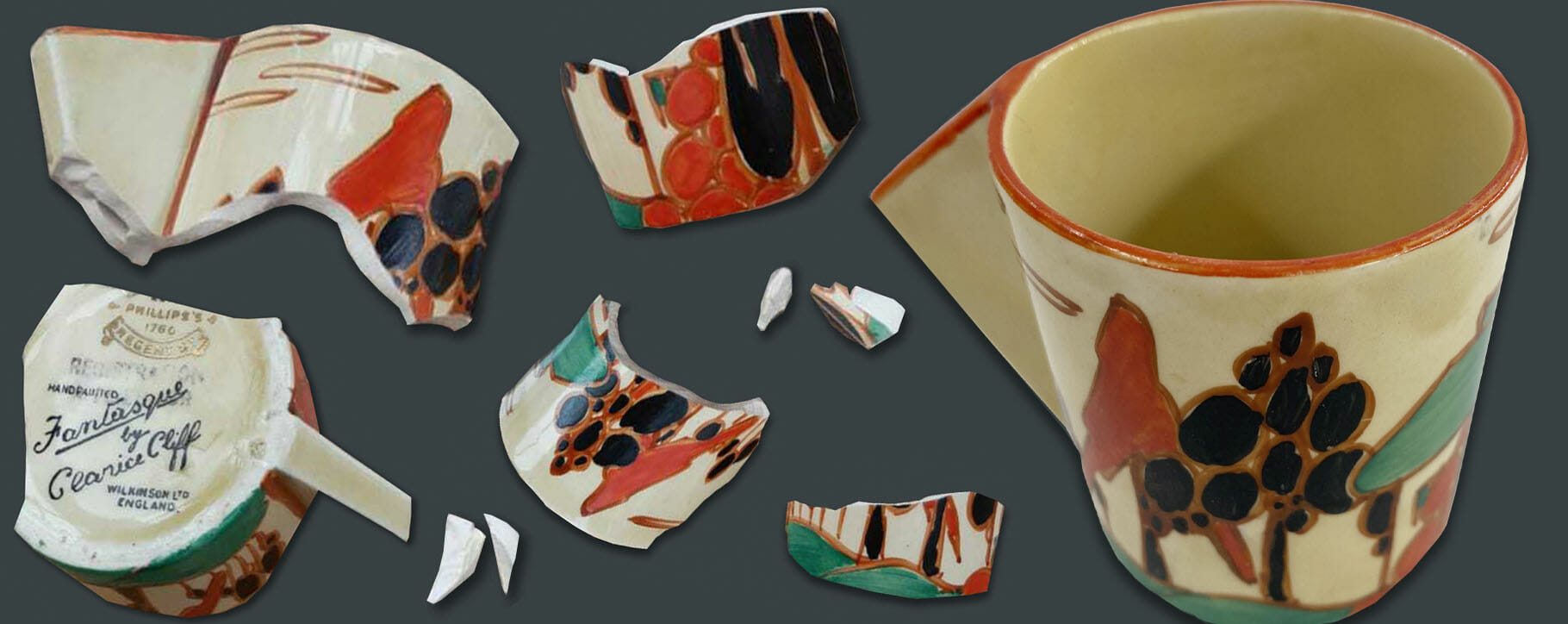 Above: a Clarice Cliff cup before and after restoration by our conservator
Above: a Clarice Cliff cup before and after restoration by our conservator




